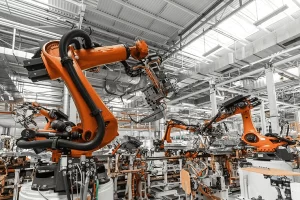How Do Power Transformers Bring Electricity to Our Doorsteps?

In the realm of electrical infrastructure, the role of transformers cannot be overstated. These bulky metallic behemoths, often perched on utility poles or rooftops, serve the critical function of modulating electricity to meet consumer and industrial needs. The journey of manufacturing these transformers is a blend of precision and engineering finesse, ensuring each unit is leak-proof and ready for the market.
What Obstacles Do Manufacturers Face in Leak Testing?
Traditionally, the process of crafting transformers involved meticulous welding operations to assemble steel frameworks, before moving them downstream for finishing touches. However, one fundamental step that cannot be bypassed is the leak test. This step ensures that the metal giants are free of flaws that could lead to catastrophic failures.
Our clients, leading producers of these vital components, have long navigated the intricacies of identifying and rectifying leaks. For smaller units, unique standalone machines have sufficed to uphold quality control. Yet, with the evolution of power demands, the call for larger transformers emerged, unveiling unprecedented logistical hurdles. The challenge lay in maneuvering these colossal structures from assembly lines to testing zones without disrupting the production line.
What Innovative Solutions Have We Developed?
Embracing the challenge with a semi-automated approach, we devised a solution that relieved the bottleneck in testing while preserving human oversight. The system we developed features an advanced conveyance mechanism that seamlessly ushers a transformer into the test chamber. Here, hydraulically powered arms secure the unit as a rubberized platen descends to form an airtight seal.
Once sealed, the interior of the transformer is imbued with air pressurized to a precise 3 psi. At this point, the unit gracefully inclines, presenting all weld joints for scrutiny. Human operators, wielding a simple soapy solution, meticulously spray each seam. Any breach in integrity manifests as telltale bubbles, marking areas needing repair.
This melding of automation and human acumen amplifies productivity, enabling the handling of expansive transformers with unparalleled efficiency. It starkly contrasts with the cumbersome reality of standalone testers and highlights the advantages of our semi-automatic systems.
How Has Semi-Automation Changed Our Approach to Manufacturing?
In an era where the pendulum swings heavily toward full automation, the return to manual welding for certain steps underscores a paradigm shift. Before reaching our semi-automatic leak tester, transformers undergo several automated phases encompassing robotic welding. However, replacing some of these mechanical tendrils with human hands has yielded superior weld quality, demonstrating that sometimes, human intuition triumphs over robotic precision.
Our experience elucidates the symbiotic nature of semi-automation. By complementing human ingenuity with mechanical prowess, the production line transforms into a harmonious dance of machine and man, each enhancing the other's capabilities.
What Can We Learn from Other Semi-Automatic Solutions?
Understanding our project sheds light on the wider implications of semi-automation in manufacturing. Across industries, the implementation of similar systems in assembly lines — from consumer electronics to automotive manufacturing — showcases a pattern of augmented efficiency and enhanced quality control. These systems maintain skilled labor at the helm, guiding processes that would otherwise be solely reliant on mechanical performance.
In conclusion, semi-automatic solutions embrace the intricacies of production by striking a balance between human touch and machine precision. Whether it's inspecting a weld or crafting a microchip, the future of manufacturing lies in this synergistic approach. The dual advantage is unmistakable: machines elevate productivity, while humans ensure nuanced quality, resulting in a better, safer output.
The journey of transformers is just one narrative within a diverse tapestry of semi-automated production, inviting us to explore and innovate further. As manufacturers continue to adapt, they will undoubtedly discover enriched vistas, painted with the promise of integral human contribution.

